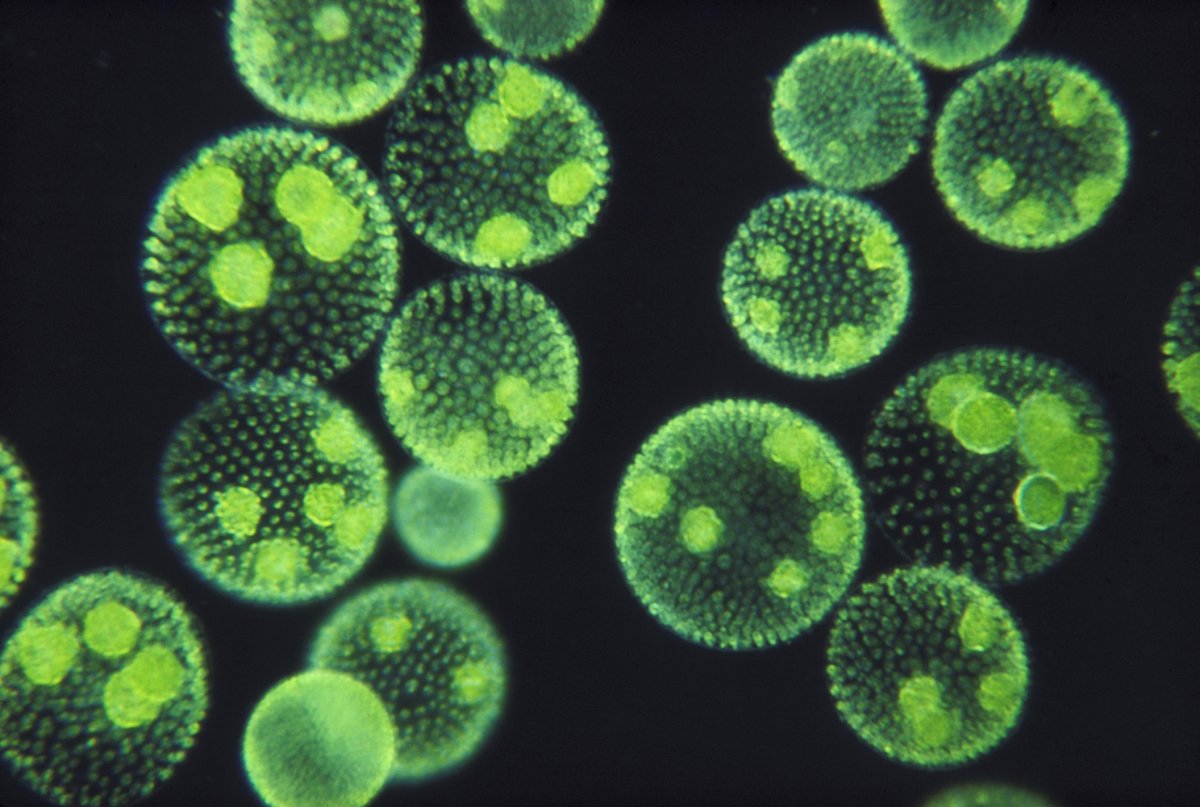Algae could provide all of the protein requirements for the United States and the entire world in as little as 30 years, researchers suggest in a study.
Global food stability is already a problem, and it may only get worse. Projections show the world's total human population is set to reach 8 billion by November this year and around 9.7 billion by 2050, according to United Nations projections.
Already, about 870 million people around the world do not have access to enough safe and nutritious food, according to the U.S. Department of Agriculture, and it is estimated that food demand could increase by up to 100 percent by 2050.
Increasing food production to meet this demand comes with significant challenges. For one thing, popular protein sources in the West, such as beef, tend to carry an enormous environmental footprint.
Beef is by far the worst protein source for the environment, creating 105 kilograms of carbon dioxide equivalents per 100 grams of protein, according to a 2018 study published in the journal Science. Additionally, according to the utility Denver Water, it takes approximately 1,847 gallons of water to produce 1 pound of beef.

In total, today's food supply chain creates 13.7 billion metric tons of carbon dioxide equivalents, the 2018 study showed, which is equal to 26 percent of all human greenhouse gas emissions. In addition, agriculture takes up 43 percent of the planet's ice- and desert-free land—a huge amount of space—and contributes massively to deforestation.
Charles Greene, a professor in the Department of Earth and Atmospheric Sciences at Cornell University, thinks algae could be the solution. He is one of the authors of a new study that suggests coastal regions in the global south could become the world's breadbasket by cultivating marine algae. That process would not only fill the protein gap but do so while reducing the environmental impact of the current food production system, according to the study.
The research suggests that algae have the potential to provide "greater than 100 percent of the global protein demand for 2050."
Algae are a group of mostly marine organisms that lack the roots, stems and leaves of plants but still carry out photosynthesis. Algae can exist as single cells or as many cells joined together.
According to the study Greene co-authored, some species of algae possess a protein content greater than 40 percent dry mass and also provide micronutrients like vitamins, minerals, antioxidants and omega-3.
"Unlike terrestrial plants, microalgae can provide the complete nutritional package for humans," Greene told Newsweek.
Commercial development of algae via water farms is not a new phenomenon, but until now it has been limited to niche food markets. If expanded, they could produce a more widely available food source while taking up a fraction of the land area, since algae do not require soil or irrigation.
"We should be constructing marine microalgae cultivation facilities as soon as possible, as the technology will only reach its full potential as we gain experience and the efficiencies of scale," Greene said.
He continued: "These facilities are commercially viable today. However, their profitability should improve dramatically once we work out the details that only come through experience. Like wind and solar energy, federal and state support can catalyze this process and make large-scale commercialization more attractive to the private sector."
Not every country would stand to directly benefit from an algae farm boom, however. In the U.S., only a few places would be ideal for microalgae cultivation. The best locations would be in the tropics—parts of South and Central America, Africa, the Middle East, India, Southeast Asia and Australia.
"This is not a solution that will benefit many farmers in the U.S., but it could be very beneficial to U.S. investors," Greene said. "Also, as we point out in the paper, the Green Climate Fund is one way that the U.S. could contribute to mitigating climate change by investing in developing countries."
The study written by Greene and his colleagues was published October 5 in the journal Oceanography.
Uncommon Knowledge
Newsweek is committed to challenging conventional wisdom and finding connections in the search for common ground.
Newsweek is committed to challenging conventional wisdom and finding connections in the search for common ground.
About the writer
To read how Newsweek uses AI as a newsroom tool, Click here.








